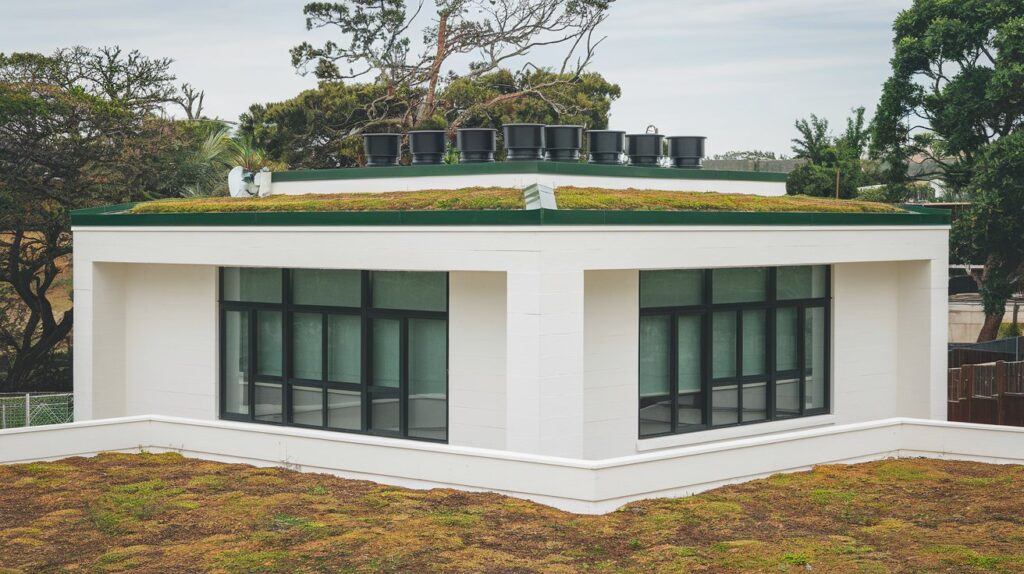Choosing the right roofing material for your home is more than just a functional decision-it’s a design choice that can define your property’s personality, enhance curb appeal, and maintain architectural harmony. The wrong pairing can make even the most beautiful home look mismatched, while the right one can create a seamless and timeless appearance. We will explore how different architectural styles work with various roofing materials, taking into account factors like shape, slope, historical influences, and regional character. Understanding these pairings will help you make a decision that protects your home while complementing its design for years to come.
Key Considerations for Matching Roofing Materials to Architecture
Understanding the Historical Roots of Your Home’s Style
Every architectural style has a story, and roofing plays a role in that narrative. For example, Colonial homes often feature symmetrical lines and steeply pitched roofs, traditionally covered in wood shakes or slate. These materials reflect the craftsmanship and resources available during the style’s early years. On the other hand, Mediterranean architecture, influenced by warm climates and Spanish heritage, often uses terracotta tiles that help keep interiors cool and add a vibrant, textured look.
For homeowners near Austin, TX, understanding these architectural roots is especially valuable due to the region’s mix of historic and contemporary home styles. Before choosing a roofing material, take time to research the historical and cultural influences behind your home’s design. This not only ensures that the new roof complements the original aesthetic but also preserves the integrity and value of your property. A mismatched roof can diminish the architectural cohesion and visual flow, while a well-matched material reinforces the home’s unique charm.
Matching Roof Pitch and Material Performance
The slope of your roof is more than an architectural detail-it determines how certain materials perform over time. Steeply pitched roofs, common in Victorian or Tudor-style homes, work well with materials like slate or asphalt shingles, which shed water and snow efficiently. Low-pitched or flat roofs, often seen in modern or mid-century homes, require materials like metal panels, rubber membranes, or modified bitumen to prevent water pooling. When selecting your roofing, you should also consider how the pitch impacts the visibility of the material. A steep roof shows off more surface area, making the texture, color, and pattern of the shingles or tiles more prominent. Matching the right material to your roof’s slope not only ensures better performance but also maintains the visual balance between form and function.
Color Coordination for Architectural Harmony
Color plays a powerful role in connecting your roof to the rest of your home’s design. A Craftsman-style house with earthy siding colors often pairs beautifully with deep browns, muted greens, or weathered grays in the roofing to keep a natural, grounded feel. In contrast, a modern home with clean white or charcoal exteriors might look striking with a standing seam metal roof in black or a cool-toned gray. The goal is to choose a roof color that either blends seamlessly with your home’s palette or provides a complementary contrast without overpowering the architecture. You’ll also want to factor in how the color will age-materials like copper develop a green patina, while some asphalt shingles may fade slightly in sunlight. Thinking long-term about color will help ensure that the home maintains its appeal year after year.
Balancing Material Weight with Structural Support
Not all homes are built to carry the same weight of roofing materials. Slate, concrete tile, and clay tile roofs can be significantly heavier than asphalt shingles or metal panels, requiring a strong structural framework. Historic or smaller homes may need reinforcement before heavier materials can be installed. A Victorian or Gothic Revival home may have been originally built to hold heavy slate, but a ranch-style house might be better suited for lighter options. Ignoring weight considerations can lead to costly repairs or even safety concerns. Beyond safety, weight also affects installation costs and timelines. Matching material weight to your home’s structural capabilities ensures that you achieve the look you want without compromising the stability or integrity of the building. Consulting with a roofing professional can help you understand the weight limitations and explore alternatives that mimic heavier materials without the same load.
Climate and Regional Influences on Material Choice
Your local climate plays a huge role in how well a roofing material pairs with your home’s architecture. In coastal regions, metal roofs are popular for their resistance to salt corrosion and high winds, and they work beautifully with coastal cottage or Key West-style homes. In colder regions, materials that can handle freeze-thaw cycles, like slate or high-quality asphalt shingles, pair well with traditional New England-style houses. Hot, dry climates favor clay or terracotta tiles, especially on Spanish or Mediterranean-style homes. While matching the architecture is key, ignoring climate can lead to premature wear and higher maintenance costs. The most successful roofing designs are those that unite architectural style with materials that perform well in the local weather conditions, ensuring that both beauty and durability go hand in hand.
Matching roofing materials to your home’s architecture is a process that blends aesthetic awareness with practical considerations. The right choice respects the history and style of your home, complements its proportions and colors, and meets performance needs based on slope, weight, and climate. Your roof is one of the largest and most visible elements of your home, and choosing the right material ensures it contributes positively to both curb appeal and long-term durability. By understanding the relationship between architecture and roofing, you can make a decision that looks beautiful today and stands strong for decades.

